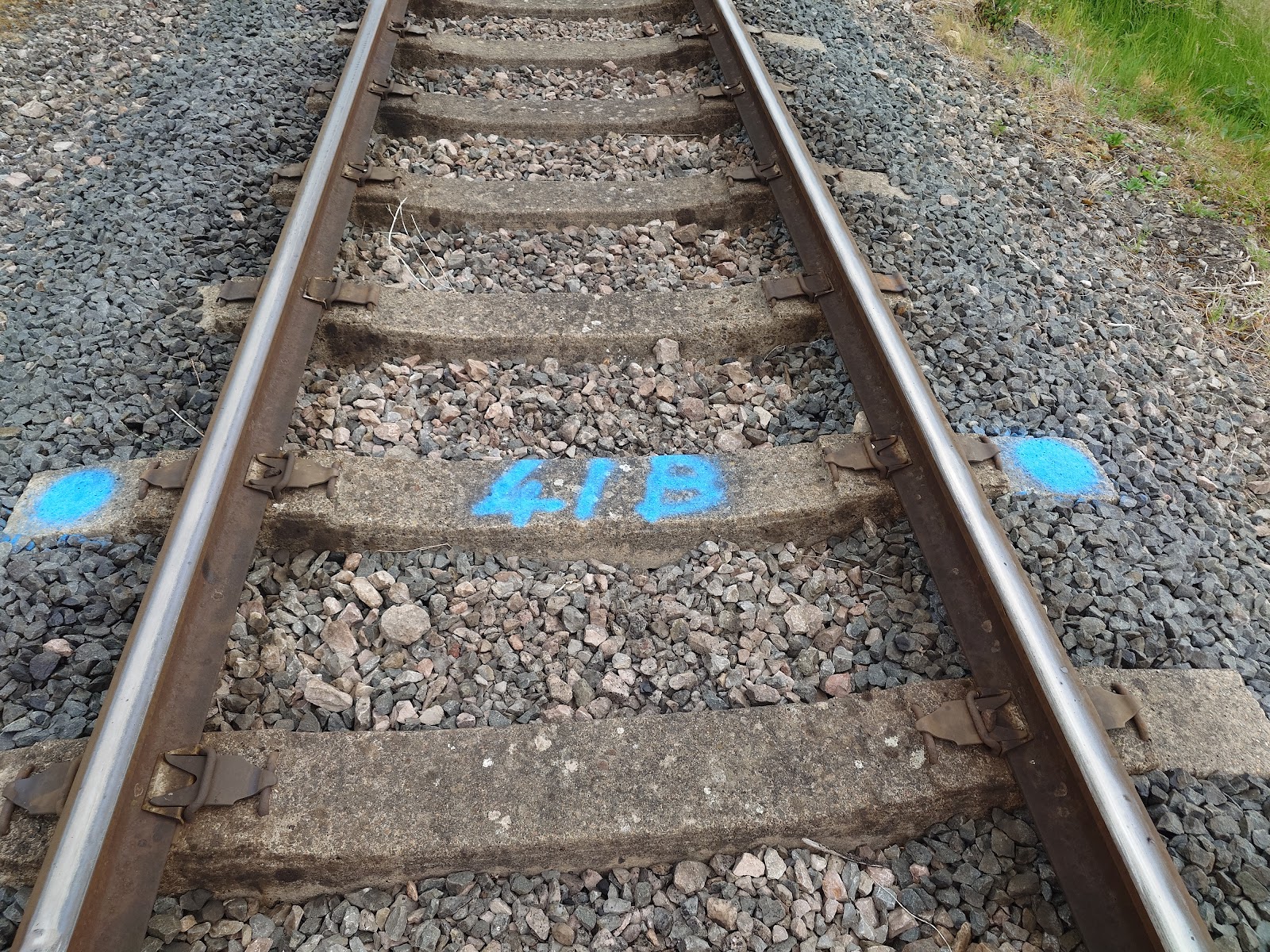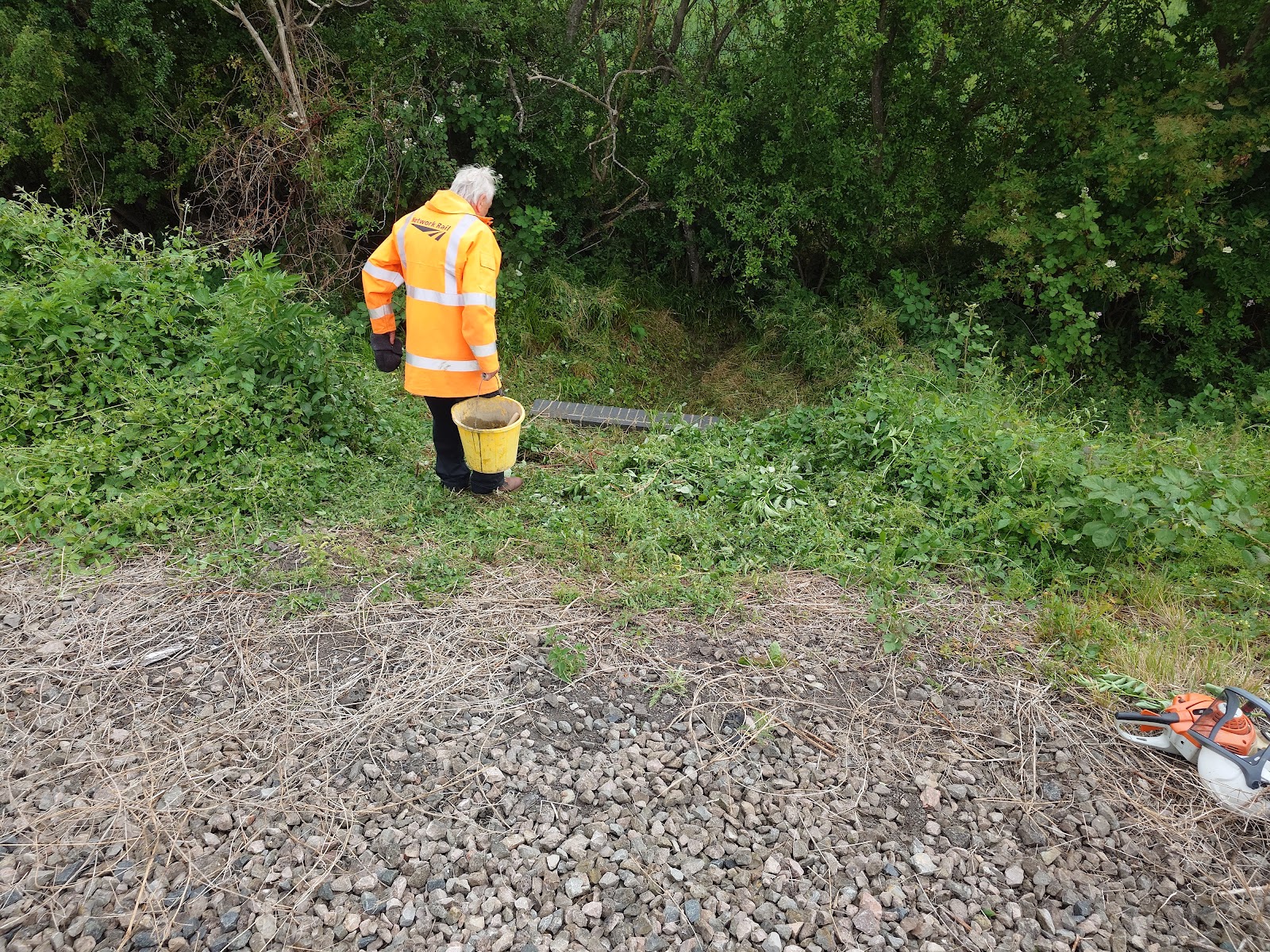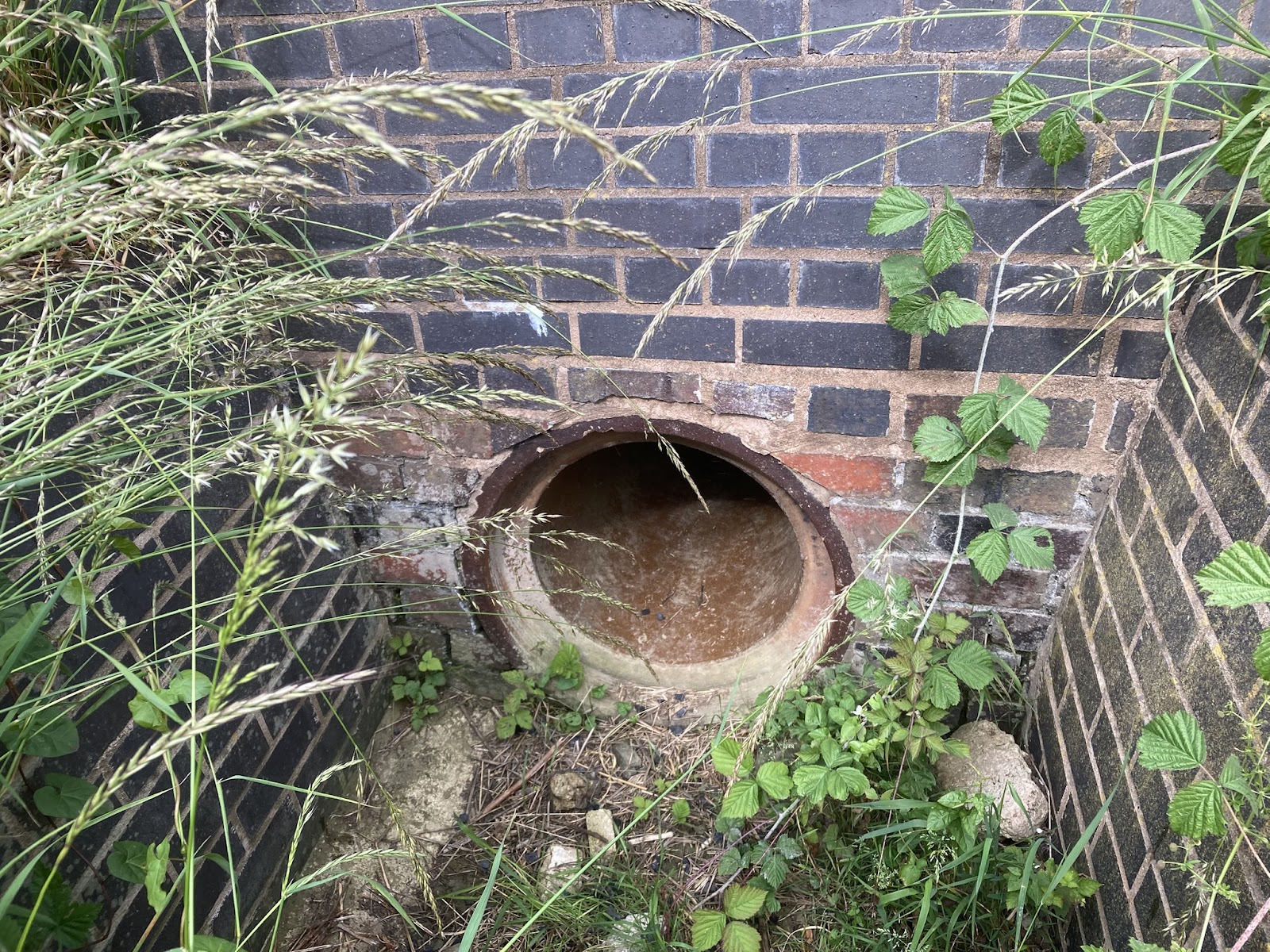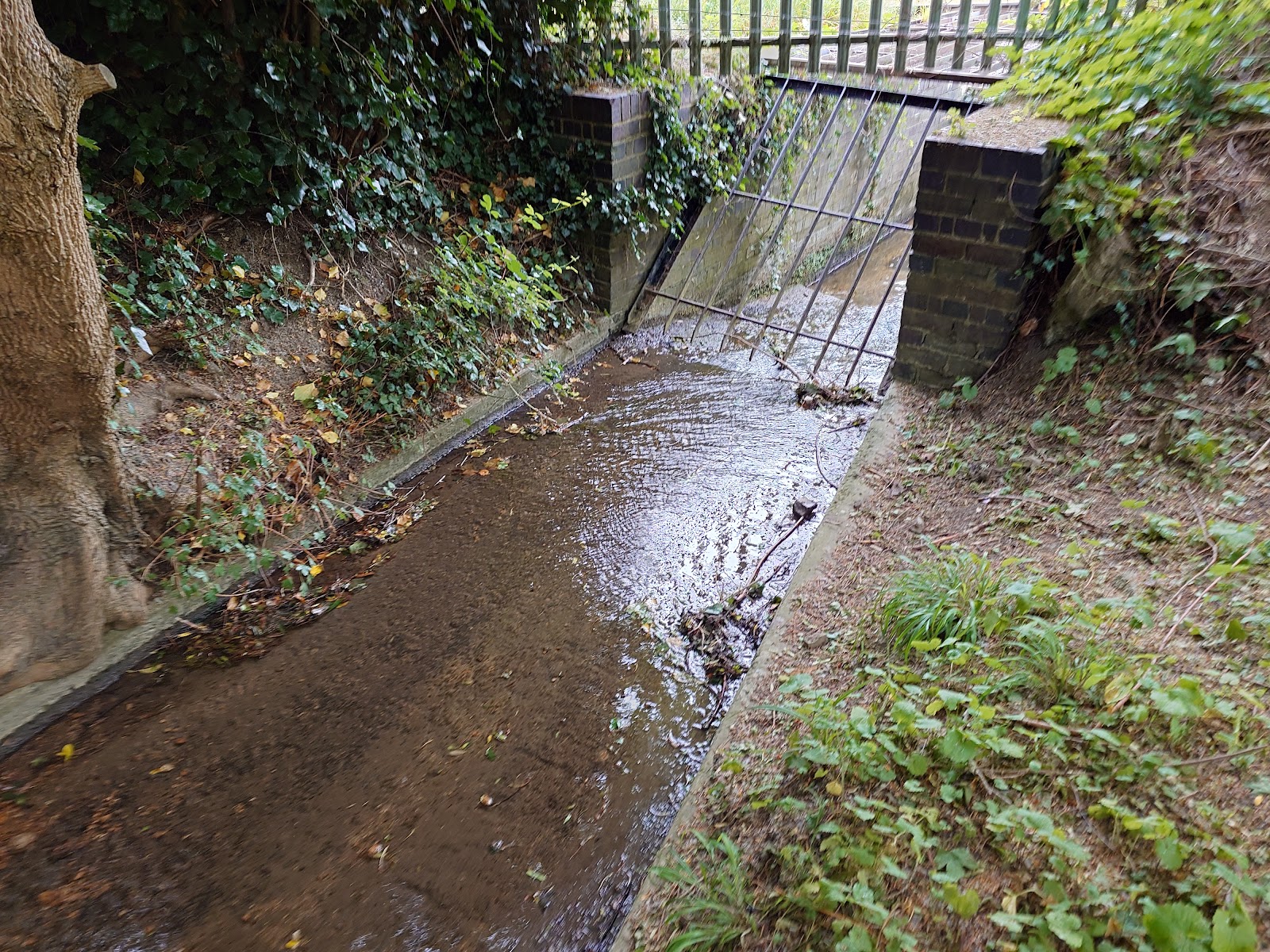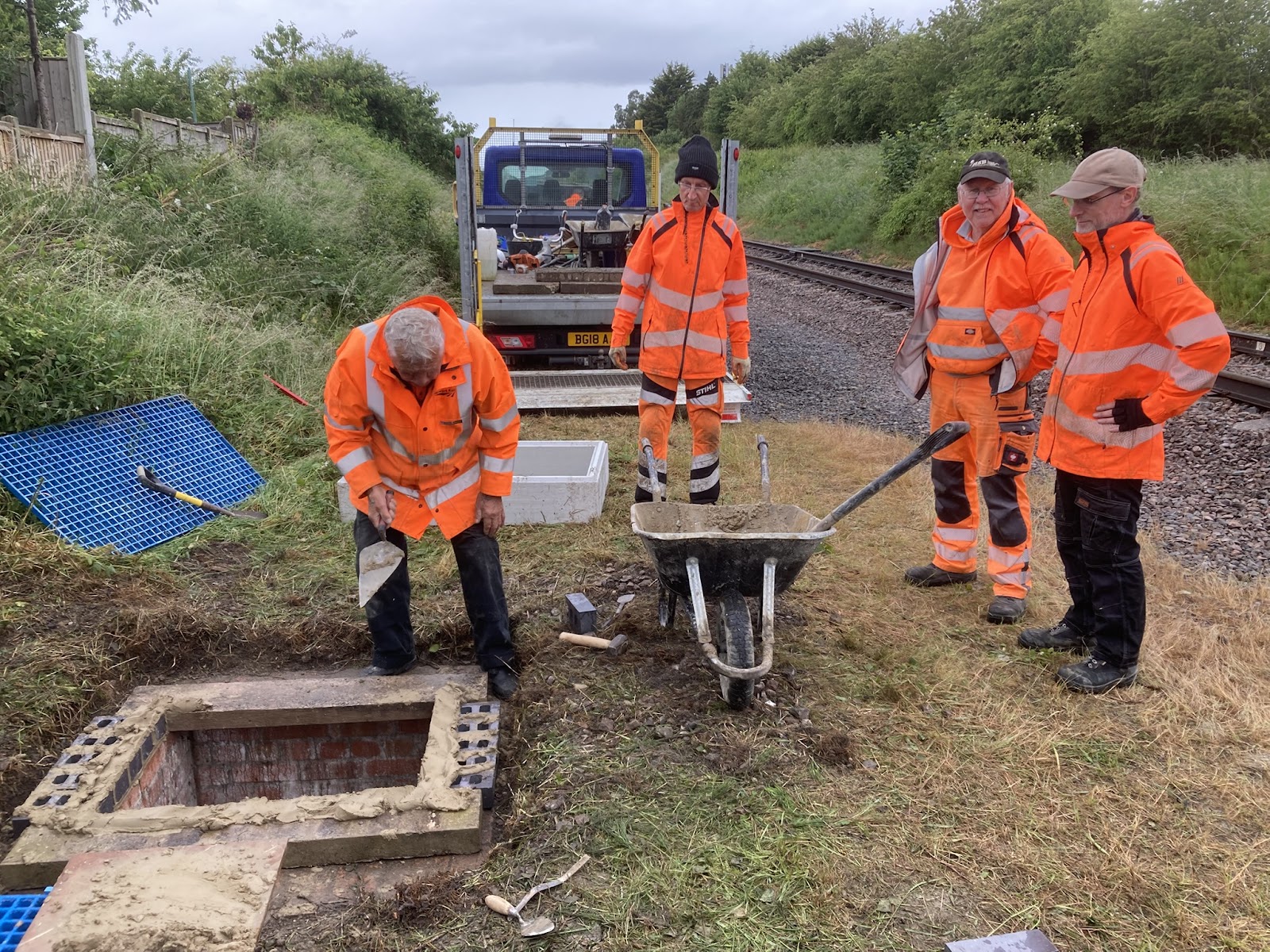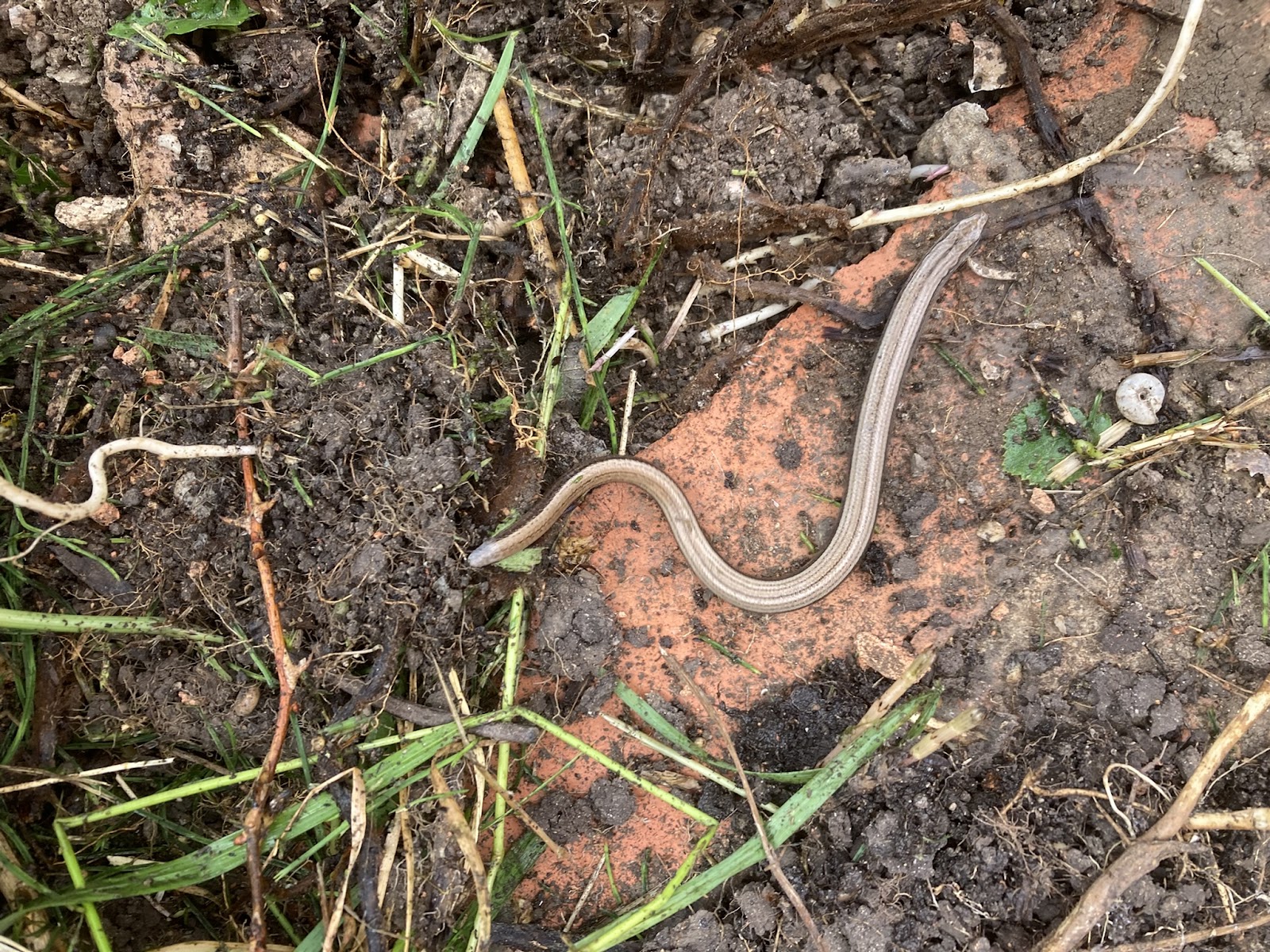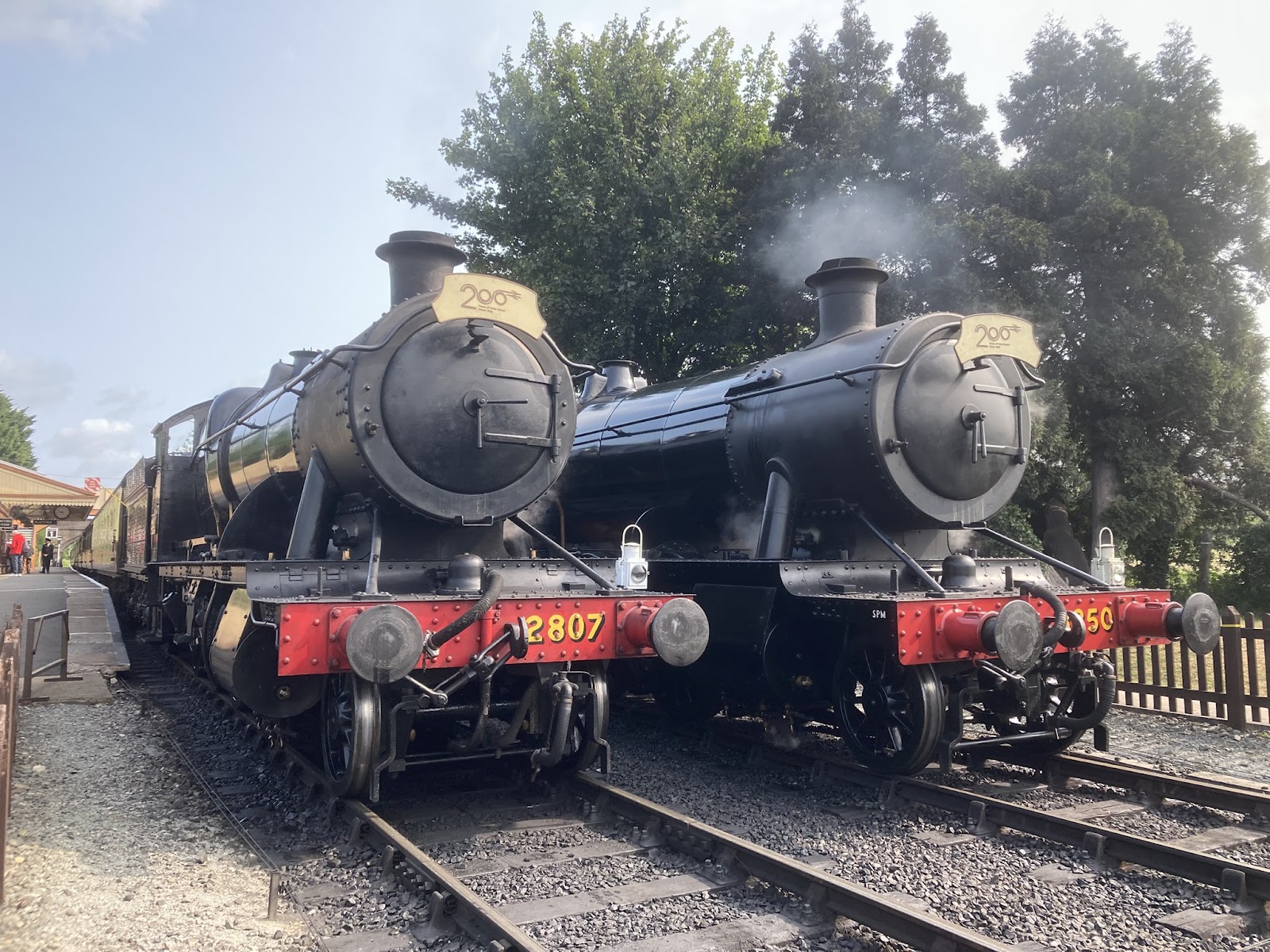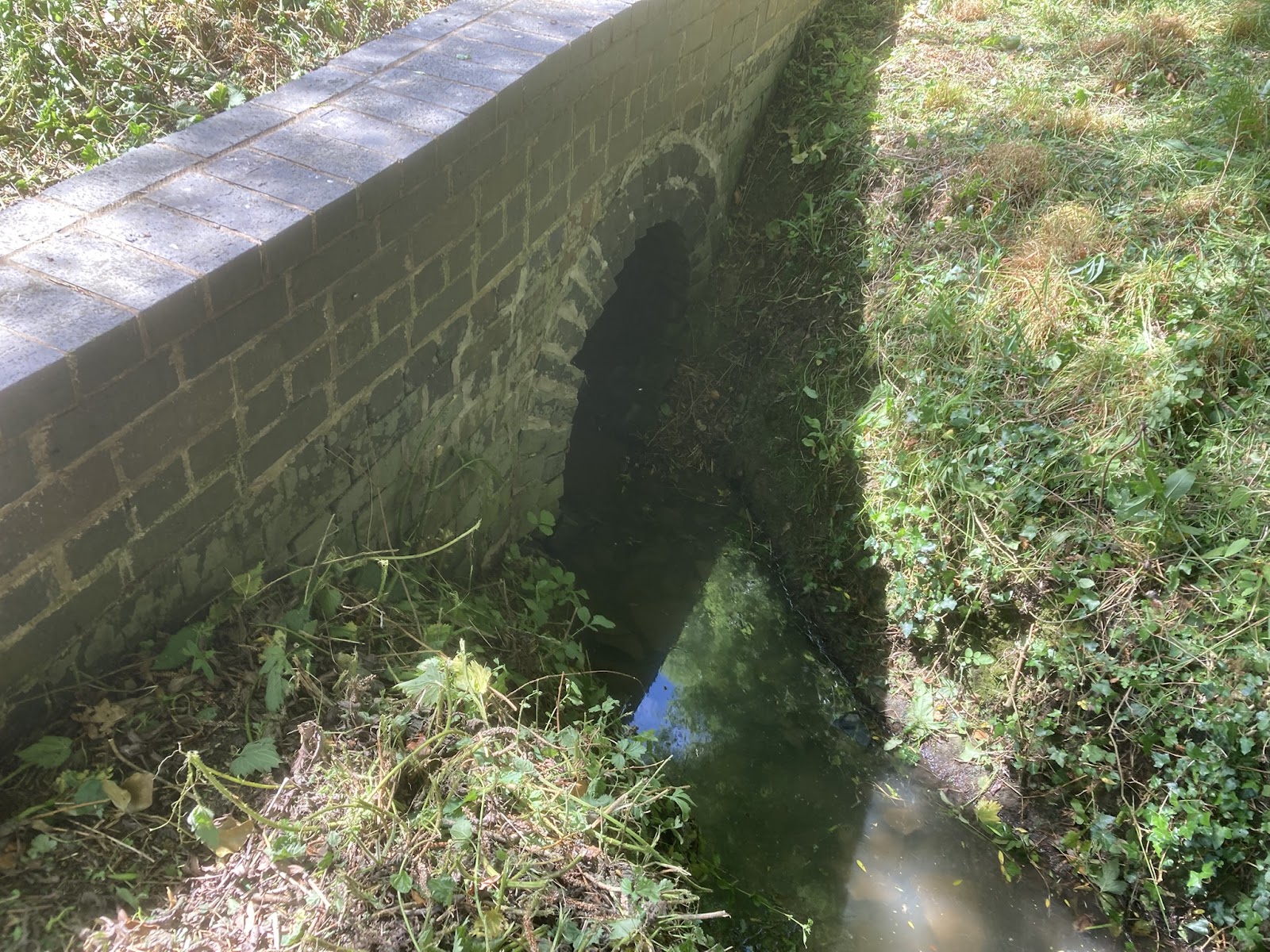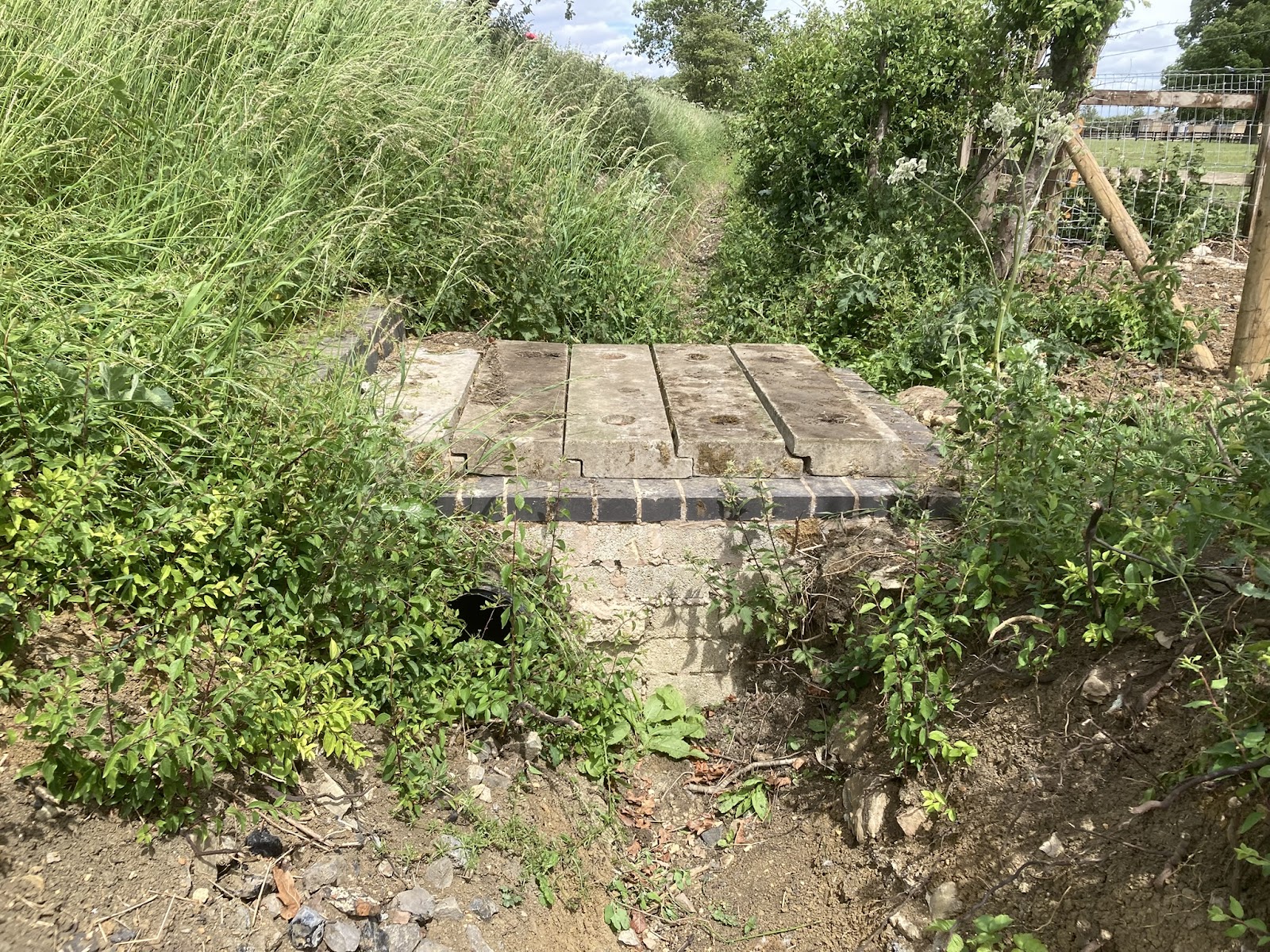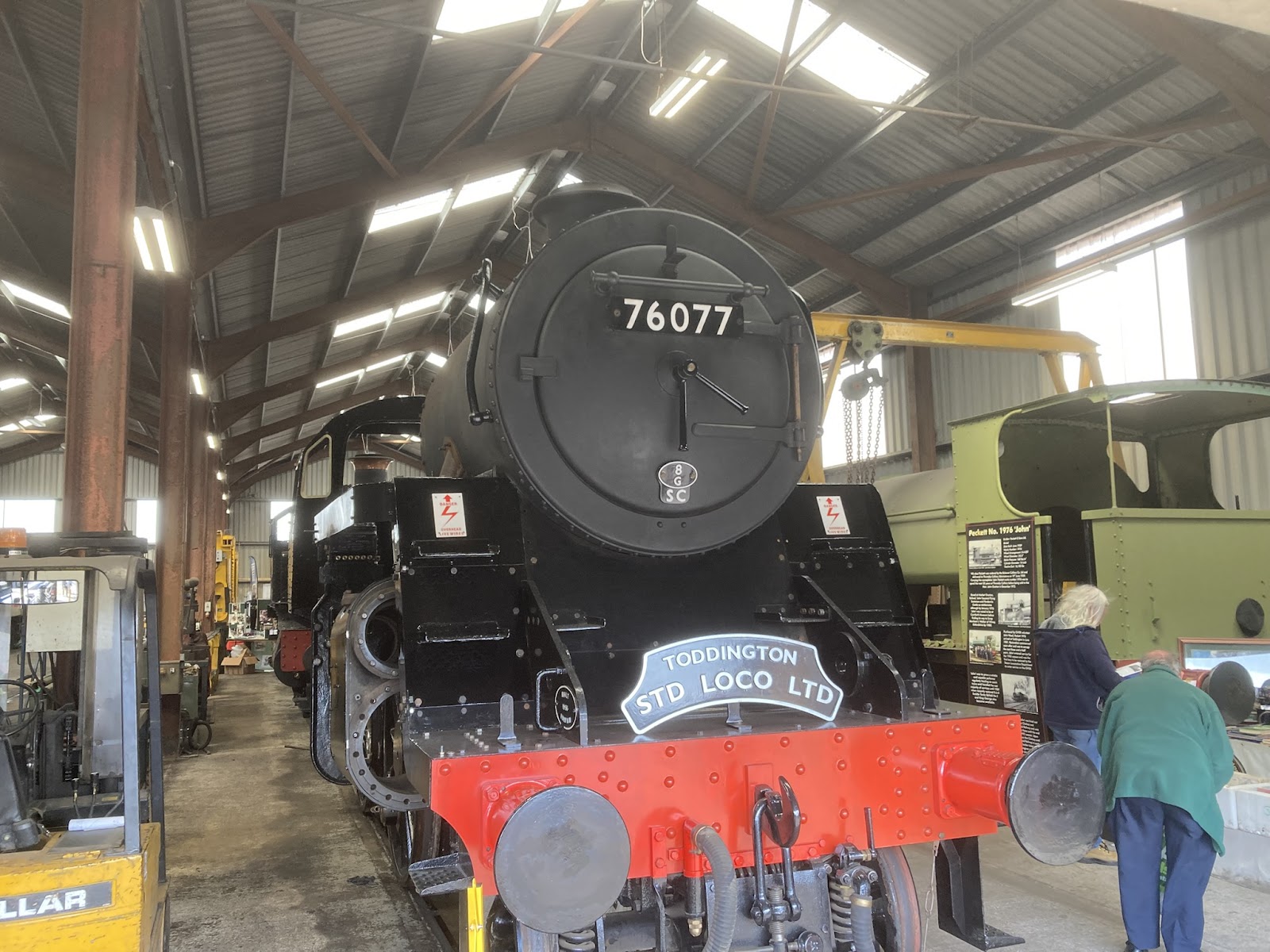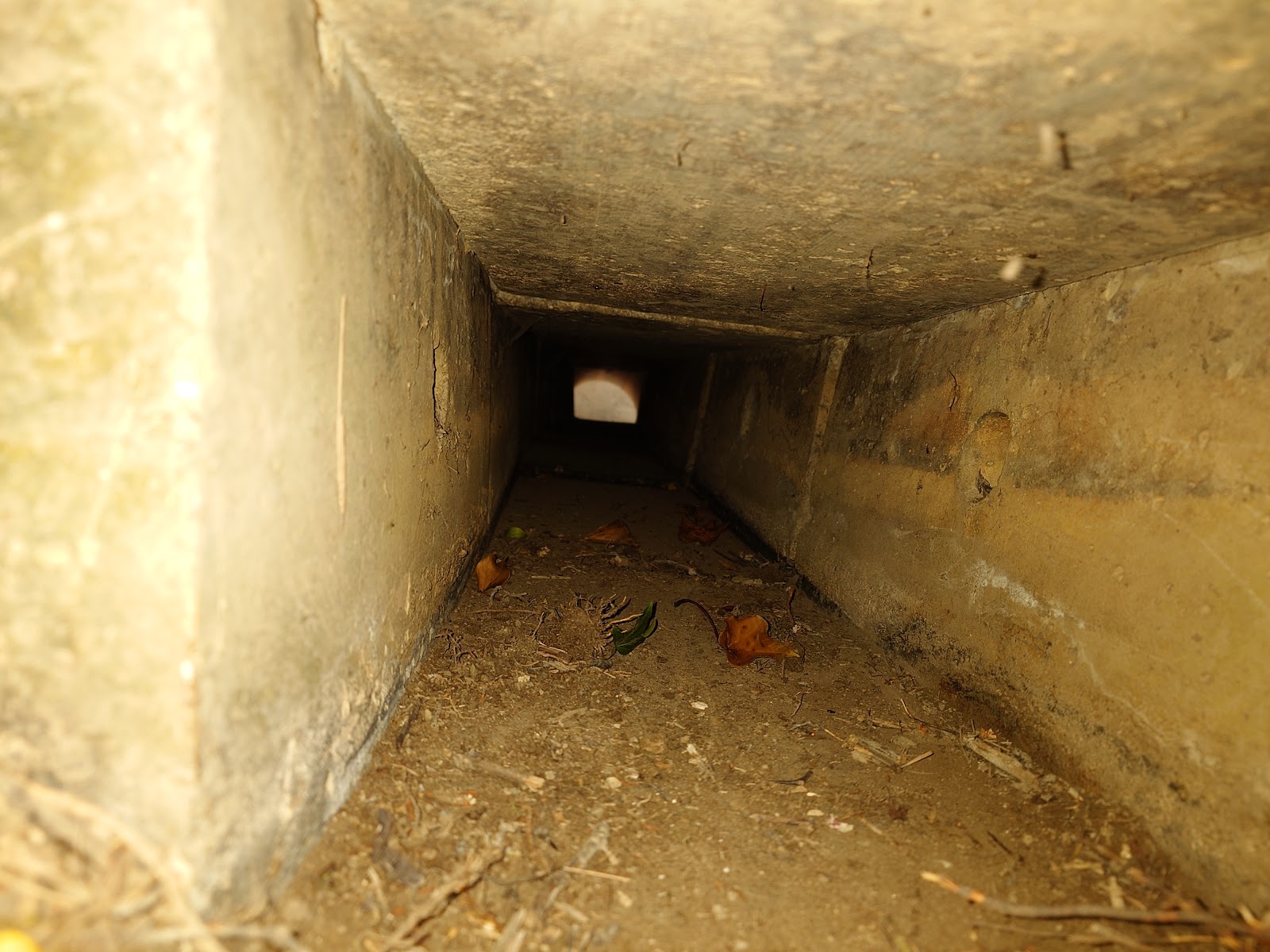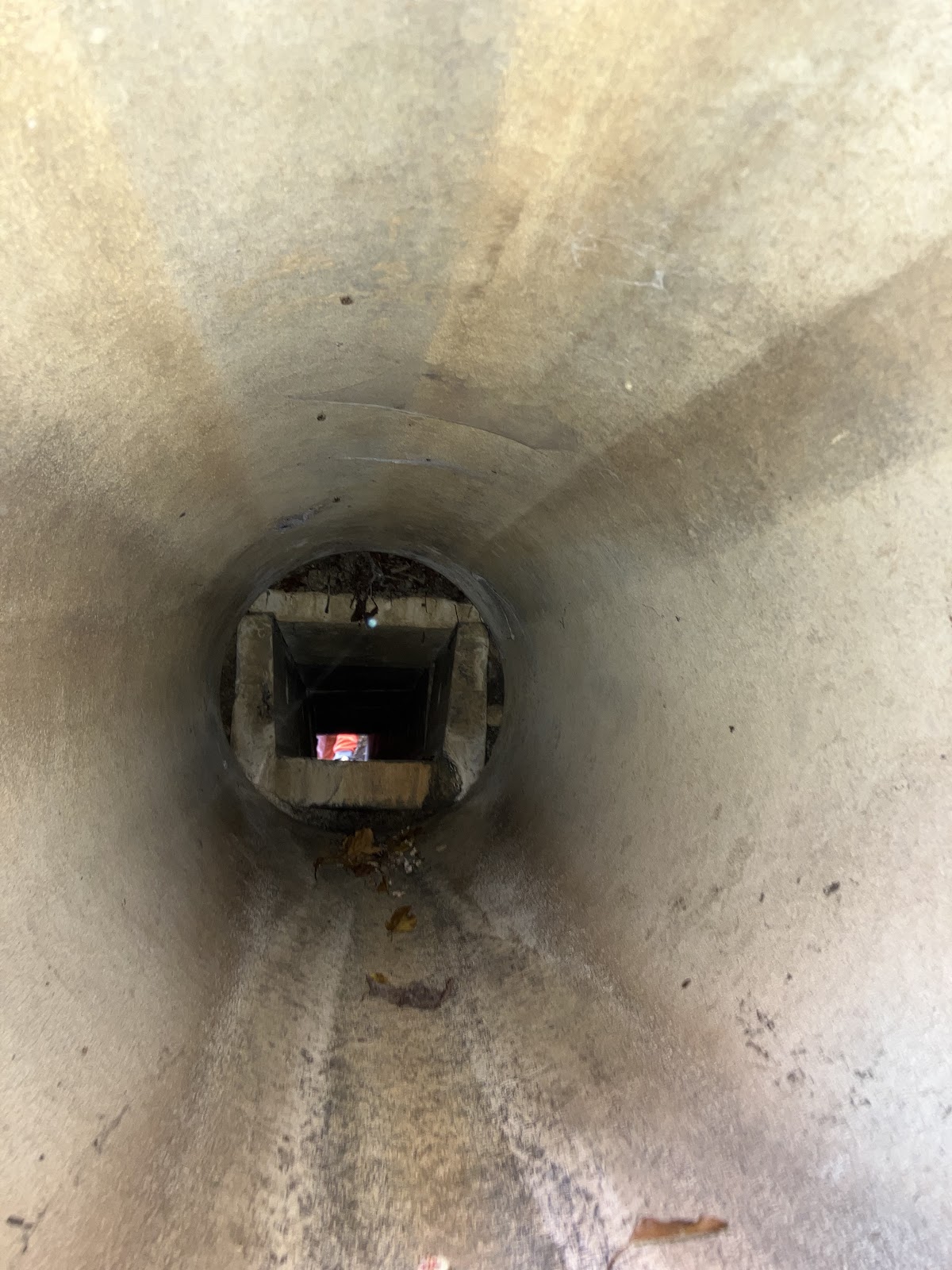On our list of outstanding tasks,
there are several marked as requiring a dry spell. With no
significant rain for nearly two months in the Cotswolds, we are
certainly in a dry spell. So time to attend to some of those tasks.
Thursday 15th May
The Toddington to Winchcombe section
was the main target of our dry spell work. However, first of all
Nigel, Roger and Andrew went to Two Hedges Road at Bishops Cleeve to
place the concrete lids on the rebuilt syphon inlet chamber of cross
drain 39B. A straightforward task, apart from carrying the lids up
the cutting side, definitely a three man operation.
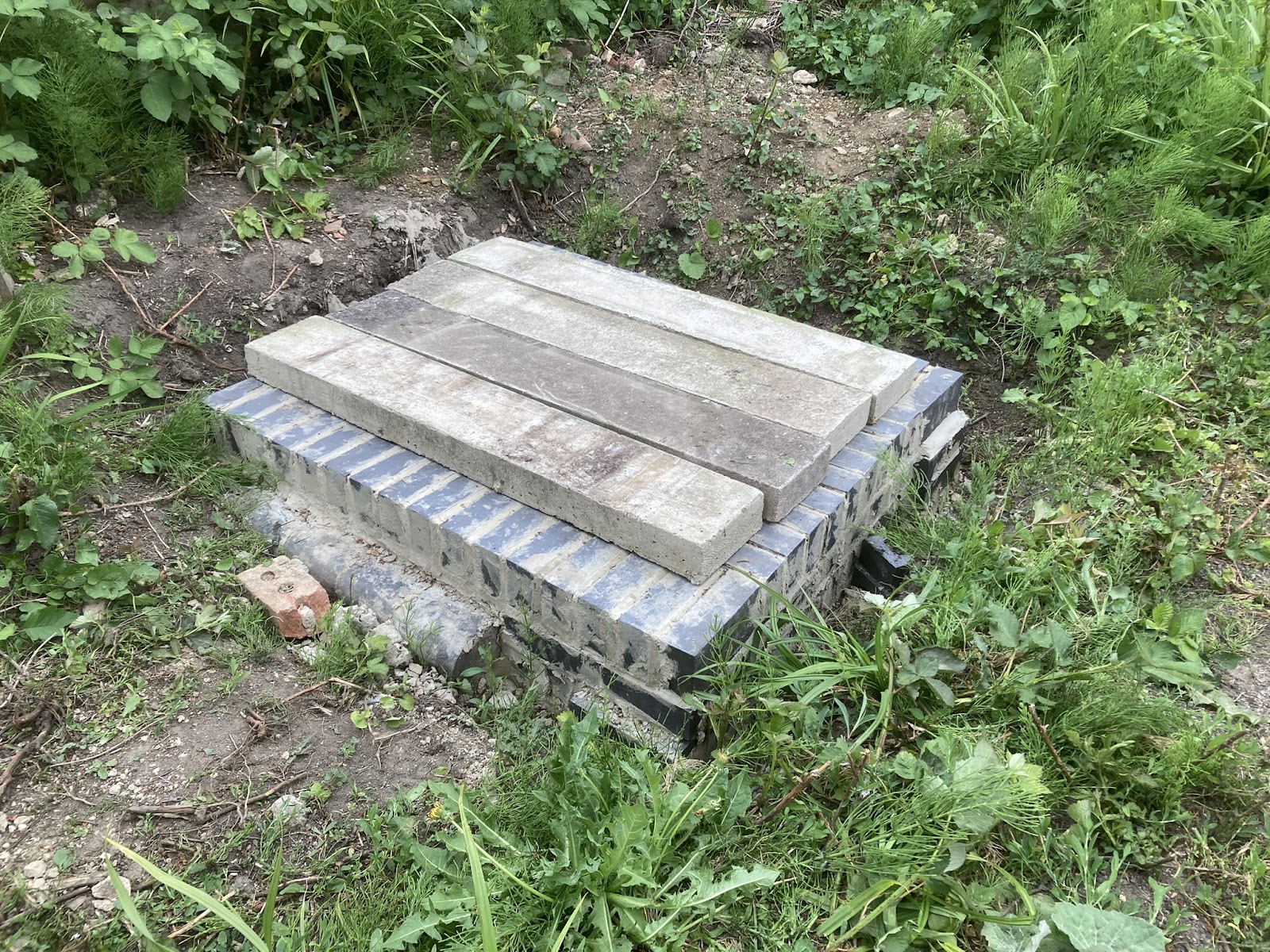 |
| 39B syphon inlet chamber complete with concrete lids. Just some infill to add and that job is done - that will have to wait until after some rain has softened the ground! |
Martin and Peter were first in at
Toddington. Their main task was to measure all the structures between
Toddington and Winchcombe which require fitting of safety markers or
handrails. This included the long filled in underbridge located a 9m 70c. Formerly
this was bridge 14, but is now known as 14X as Toddington Station footbridge is now number 14. Whilst measuring
the up side (Malvern) of culvert 14B, they removed two old sleepers
from the outfall pond. These were once part of a farmers bridge
upstream, washed away in one of the winter storms.
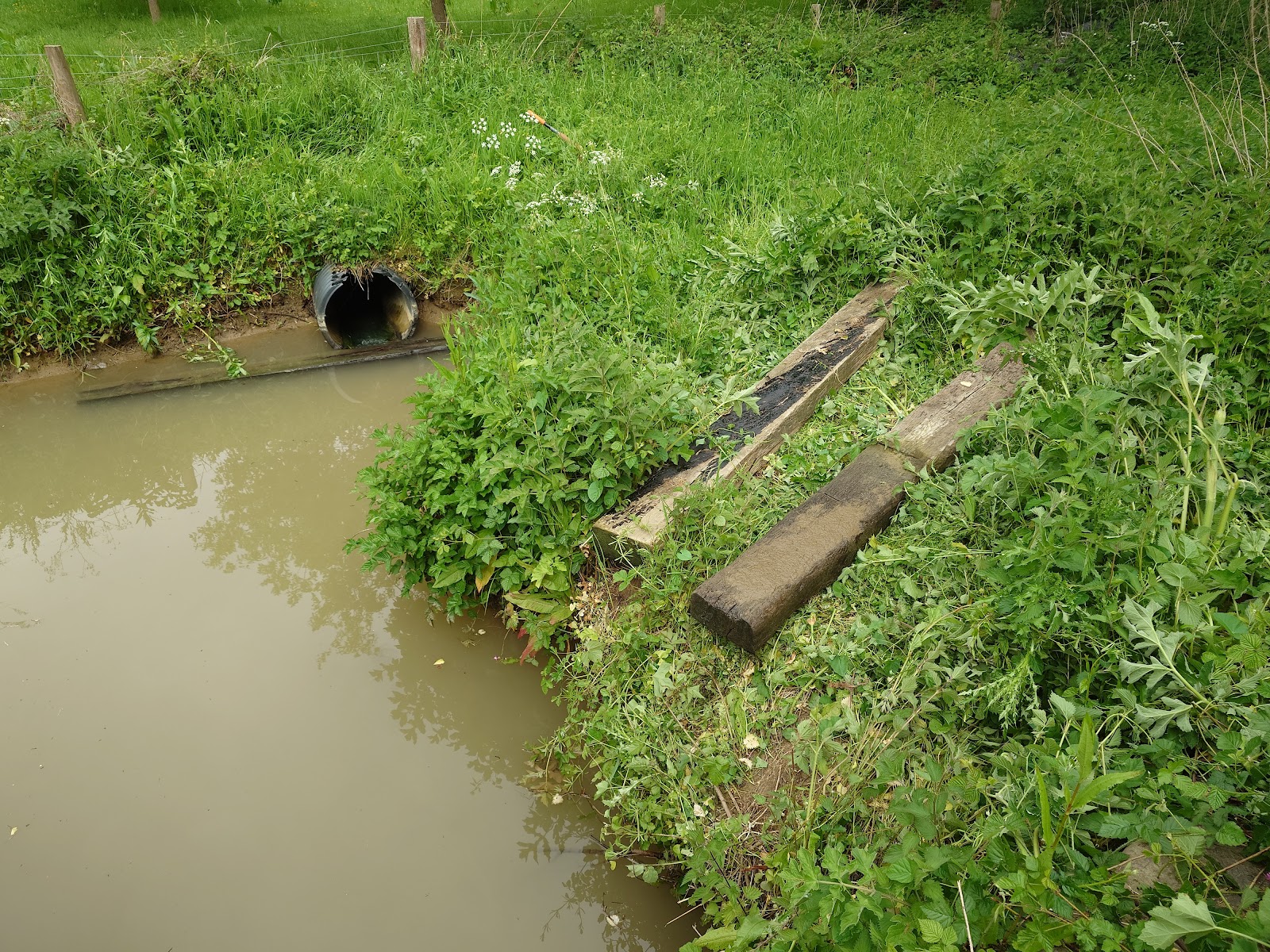 |
| The first two old sleepers removed from the outlet pool of 14B. Third one resting against the outlet pipe - waiting for a five man team to remove. [Photo by Jonathan] |
Another ‘dry
day’ tasks they completed was the removal of silt and vegetation
from the inlet apron of cross drain 20C on the down (Cotswold) side
at Chicken Curve.
Once Jonathan had completed the weekly
vehicle checks, and made some minor repairs; he and Polly also made
their way to Toddington South. They tacked the three old sleepers in
the inlet channel on down side of culvert 14B.
 |
| Two of the old sleepers removed from 14B inlet. [Photo by Jonathan] |
| |
 |
| Taking advantage of the low water levels, Andrew takes a photo of the inside of the 14B bore. [Photo by Jonathan] |
 |
| Looking inside the 14B bore. |
When Nigel, Roger and
Andrew joined, the final old sleeper in the up side outlet pond was
removed. This was up against the outlet pipe; so once removed the
water level dropped a bit more. The low water level revealed the
extend of the undercutting of the up side high mileage wing wall.
Repairing this will needs a much lower water level.
 |
| 14B outlet pond - low water level obvious. End coping stone of the high mileage wing wall visible under the vegetation. |
The group of five next moved south to
the down side inlet of culvert 15A. The winter storms had dislodged
three of the concrete slabs which form the bank protection here.
Despite the dry spell, this stream still had a very slight flow
running; plus some deep pools in the inlet channel meant careful
placement of feet to avoid wet boots.
 |
| All slabs on 15A inlet now upright, looking up stream ... [Photo by Jonathan] |
 |
| ... and downstream to the down side headwall. [Photo by Jonathan] |
Having completed the measuring tasks,
Martin and Peter joined the rest of the team for lunch at Didbrook.
Then for all the afternoon task was digging out around breaks in a
SGP pipe which carries excess water from the down side inlet of cross
drain 16A to the road under Didbrook No2 bridge. This pipe is very
old 9inch internal diameter SGP, probably dating from the building of
the line. One break is going to be simple to repair with a concrete
patch. The other beak which is around 6 foot long will be more
challenging. We no longer have sufficient 9 inch SGP spare, and
standard sizes of modern plastic pipe is either too big or too small.
 |
| The small break, essentially where the collar of the downstream section has broken off. Easily fixed! |
 |
| The big break - two completely broken sections of 9" SGP pipe removed. |
 |
| Upstream end of the break, this section of SGP is cracked. |
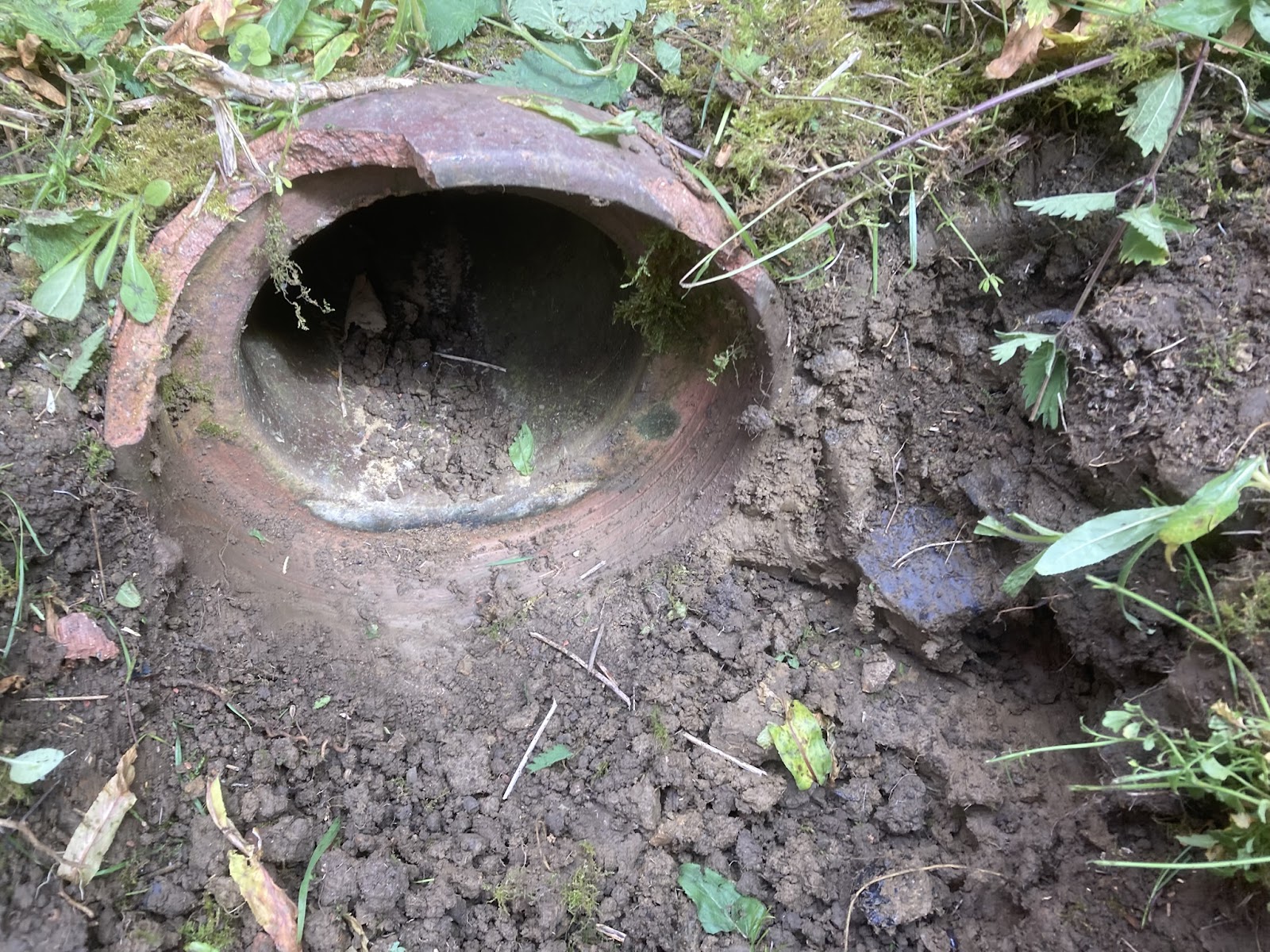 |
| Downstream end of the break, slightly damaged collar on this section of pipe. |
We were delighted to note that Gloucestershire County Council highways have repaired the roadside headwall up side high mileage of Didbrook No2 bridge. This is the exit from the pipe from the 16A inlet - interestingly there was a small flow here, where as it is completely dry higher up where the breaks are.
 |
| GCC repaired roadside headwall - and verge markers installed to make it more visible to vehicles. [Photo by Jonathan] |
Wildlife report: As now usual
when at Bishops Cleeve, the larger flock of gulls was noted, audibly
first then visually. Otherwise the main items to note were some
Common Hogweed (Heracleum sphondylium) plants at Didbrook. This can
cause skin iterations, but is not so dangerous as Giant Hogweed
(Heracleum mantegazzianum). Fortunately we have not
encountered any Giant Hogweed - so far! An interesting insect spotted was a
green lacewing – not surprisingly as there are over 1,300 known
species we did not make a positive identification. No fish spotted in any watercourse today - and still no sign of hedgehogs.
